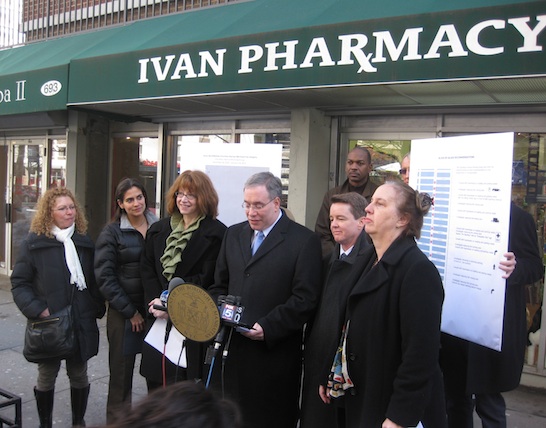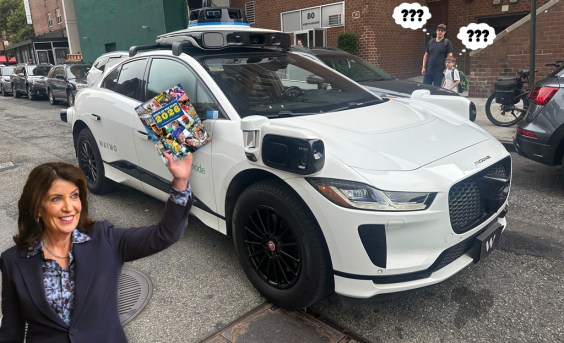
Since Manhattan Borough President Scott Stringer has promised to take his approach to street redesigns, first put into place by the Columbus Avenue working group, borough-wide, Streetsblog decided to check in with him to see just what this process would look like.
The details are still being worked out. Stringer wasn't yet sure, for example, whether future working groups would limit their surveys to businesses along the same side of the street as the bike lane, as was done on Columbus, or branch out to groups like residents or pedestrians visiting the area. Stringer did say he'd like to bring working groups in from the very beginning of the process rather than solely using them to troubleshoot already implemented redesigns.
Stringer argued this would ultimately enhance the transformation of the city's streets, not slow it down. On Columbus Avenue, he said, only two of the businesses surveyed said they were opposed to the new protected bike lane. "There's a real opportunity here to tone down some of the rhetoric and get things done," said Stringer. "Having dialogue and even disagreements with communities about street design in the short run may be a big pain for the bureaucrats, but in the long run it's going to mean a lot to evolving the street design of the city."
Stringer called the DOT's current approach too domineering. "The DOT philosophy has been it's either my way or the highway," he said. "It's a system that has been too top-down, too in your face."
When pressed on the fact that the Columbus Avenue bike lane had been the subject of public discussion since 2008 and community board debate since 2009, Stringer walked back his comments somewhat. "I think that the Columbus Avenue bike lane process has from the beginning been really positive," he said. Stringer said that the Columbus Avenue process was better than others because of the shared outlook of the community and DOT. "They put DOT in a more comfortable position, because at the end of the day the goals were the same," he argued.
Even so, said Stringer, "there wasn't always transparency." He said that DOT wanted to keep the results of the working group's survey private, for example. "If you think for a second that they've been collaborating with people around the city, that's just not true."
With the exception of the first segment on Ninth Avenue, however, the city's new protected bike lanes have all received community board votes in favor. In the cases of Columbus Avenue, the Brooklyn Waterfront Greenway, and Prospect Park West, the agency was responding to community-based campaigns for safer streets.
Stringer believes the process went awry, for example, with the way pedestrian refuge islands were built along Columbus -- DOT added most of them after the community board vote, once new funding became available to do so. "The islands are terrific," said Stringer, who agreed that they had been popular at the community board when a smaller number were proposed. But, he said, the community shouldn't have found out about the extra islands only after they had been installed.
"You tell people what's going on," he said. "If it's good news, I don't see why you wouldn't want to tell people." Not doing so, he argued, feeds "a public perception that you're not transparent or forthcoming, real or imagined."





